This post may contain affiliate links. If you make a purchase through a link, I may receive a small commission, at no cost to you. These commissions help keep this website up and running, and I thank you for your support. Read my full disclosure here.
We recently spent seven very enjoyable days in Chamonix over the Christmas and New Year period. We had originally planned to go to the Swiss Alps, but when we went to book accommodation, we quickly realised how expensive it was and that you really need to book early. Disheartened, we continued to search for alternatives and discovered that there was still accommodation available over on the French side of the Alps in Chamonix, and the accommodation was more reasonably priced.
We were glad we ended up at Chamonix because it turned out to be the perfect winter ski destination. They have a wide range of ski areas to choose from which cater to all abilities. There are plenty of beginner and intermediate slopes up to the more challenging black slopes for the very experienced. I also loved the it was easy to get around without needing to hire a car. There is regular transport to the slopes and attractions. In this post I’ve tried to provide you as much practical information as possible to plan your ski holiday in Chamonix. I had never skied in Europe before, so it took me a while to figure out how everything worked so I’ve included all the practical stuff.
Chamonix Transport
If you don’t want the additional expense of hiring a car, you can very easily and cheaply get around Chamonix using the transport options available. When we go on holiday, we usually hire a car for convenience. However, when I discovered the easy and cheap transport options for our holiday to Chamonix, we decided against it. It also meant we didn’t have to worry about scraping ice off windscreens or about how we were going to get around in the snow and ice. Some of the local residential streets and driveways we saw were super icy, so we were relieved we went for this option, as we are not very experienced at driving in these conditions.
Tip
Whilst we were in Chamonix, we observed the bus ticket office running out of paper to print tickets (this caused us problems on our day trip to Italy). They stated that without this paper, they couldn’t sell tickets. This went on for several days. A fellow tourist we met who regularly holidays in Chamonix advised us that these kinds of issues are a regular occurrence at this bus station, and the reviews on Google also support this. So I recommend you have some euro on you in case you have to purchase your ticket from the bus driver, as they only accept cash. There are no ATM’s nearby. We saw a very panicked tourist attempt to get on the airport bus to catch his flight, and he didn’t have any euros on him to buy a ticket.
Getting to and from Chamonix
Geneva, Switzerland, is the closest international airport. Regular buses run from Geneva airport to Chamonix’s bus station, but there are also several companies that run regular door to door shuttles which are very reasonably priced. We ended up taking the door to door shuttle as it was the easiest option for us. Here is the list of transport options from Geneva airport.
Getting around Chamonix
Chamonix has a bus and train service which runs up and down the valley and to the various ski resorts and hiking areas. Around the town centre, they run a free, cute little mini bus called Le Mulet, which translates to ‘the mule’. Apparently, the service was named after the mules, which were once used to transport the visitors to and from the scenic attractions in the valley.
Visitors can get a guest pass called the Carte d’Hôte / Free Guest Card, which entitles them to free travel on the Chamonix Valley buses and on SNCF trains in the valley between Servoz and Vallorcine. It also provides discounts on some of the local attractions. Your accommodation provider needs to give you this card, so be sure to ask for it when you check in.
If you are staying in private accommodation, you can get one of these passes for €10 from the Chamonix Town Hall or Chamonix Tourist Centre.
Dogs are allowed to go on the buses, but need to be muzzled and leashed or in a basket. When getting on the bus, you are supposed to enter via the front door to show your ticket and exit out the rear door. However, if you are taking the buses out to the ski field, it doesn’t actually operate like this (see below).
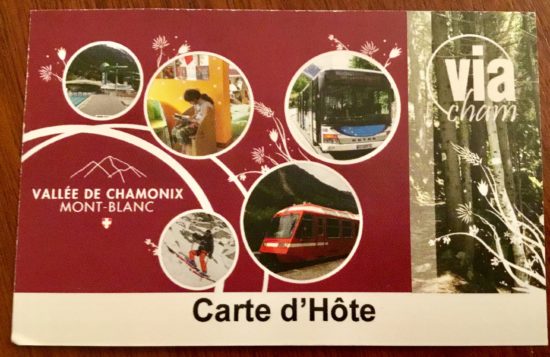
Getting to and from the Chamonix Ski Slopes
Buses run from Chamonix to the surrounding ski slopes, including Grands Montets, Brévent-Flégère, Les Houches, Le Tour, Vormaine, Balme, Vallorcine and Savoy. Your are supposed to enter via the front and exit via the rear, but in reality, everyone just clambered on struggling with their ski gear through both doors. The drivers never bothered asking to see anyone’s bus pass because I think they just assume that everyone has a free visitors pass. The buses get very crowded with skiers and ski gear, so be prepared to stand squashed amongst your fellow passengers.
TipIf you are in walking distance of the ski bus stop, then generally you walk to it in your full ski outfit including wearing your ski boots, as they are very difficult to carry. Although they are very awkward to walk in them too! Make sure you unclip the top clips and loosen the bottom ones. Pop your ski goggle on over your woolly hat, perched on your head, ready to go. Use my guide on What to Wear and Pack for a Day of Skiing.
Skiing
Ski Gear Hire in Chamonix
Unless you own your own ski gear, then I recommend you hire what you need from one of the many local ski hire services. They all offer online booking services, so make your life easy by booking it in advance. We hired our ski gear from Chamonix Ski (117 Route des Pecles, 74400 Chamonix-Mont-Blanc) because of their good reviews, reasonable prices, and because they were close to where we were staying. I also liked that they let customers collect their ski gear the day before their first ski day without charging extra. I realise that they likely benefit from this arrangement as well because otherwise there would be a lot of customers waiting to collect and fit their ski gear first thing in the morning. But its also benefited us because on our first ski day we already had our gear and we could head straight out first thing in the morning.
We had hired our ski gear for the entire period of our stay, as although we had not planned on skiing everyday, we weren’t sure about the weather, so wanted to have the flexibility of skiing when it suited us. However, we were able to get plenty of ski days in at the start of our holiday, so decided to return them a bit earlier so we could have a few days of sightseeing. The Chamonix Ski hire kindly only charged us for the days we used them, so I really appreciated that.
If you are a complete beginner, then when you collect your ski gear, get the staff member to run through with you how to fit your boots and skis properly. Be honest about your skiing abilities so they can match your ski gear to your skill level. I’ve also included a great series of videos that show you ski gear basics such as how to put your ski boots and skis on, how to walk in ski boots (very awkwardly!), and how to carry skis.
Ski Gear Storage in Chamonix
If your accommodation does not provide storage for your ski gear, then there are ski storage facilities around Chamonix. We were lucky to have a balcony in our apartment, so we stored them on there. I’m aware that some apartment buildings have lockers in the basement.
Tip
Don’t wear your ski boots through your apartment building, they clunk very loudly and can damage the flooring. You will likely see posters on the walls of your apartment building telling you not to wear them. We just took ours off in the lobby and walked up to our apartment in our socks.
Chamonix Ski Fields
Chamonix has worked hard to improve its facilities to make them more family friendly. They have a huge range of ski fields to meet all abilities from beginner to advanced. Here is a map of the winter ski areas and summer hiking areas. Make sure you have a map of the ski runs with you because if you are a beginner, you really don’t want to accidentally find yourself heading down a black run.
European Piste Classifications:
- Green – Easy
- Blue – Moderate (some parts can be quite steep though!)
- Red – Intermediate
- Black – Difficult
- ‘Piste’ means ski run, so if you see ‘off-piste’ that means it is an area that is off the ski run. These areas are skied by experienced skiers.

Domaine Grands Montets
Above the village of Argentière, this large ski field is mainly aimed predominantly at the advanced skier with plenty of black and red runs, but there is also a small beginner ski area on the plateau de Lognan
Domaine Brévent-Flégère
Brévent and Flégère are actually two ski fields side by side, but are connected so you can go from one side to the other. These slopes get super busy. Flégère has some beginner slopes, but it is more aimed at moderate to intermediate skiers. Brévent has black runs, blue runs and a small beginners run. If you are a complete beginner, then the Le Savoy ski area at the foot of Brévent is a great place to start. It has drag lifts and a magic carpet.

Domaine Les Houches
Les Houches is a great place for beginners and those moving onto moderate and intermediate levels. It has a real laid back family feel and is much quieter than say Brévent-Flégère.
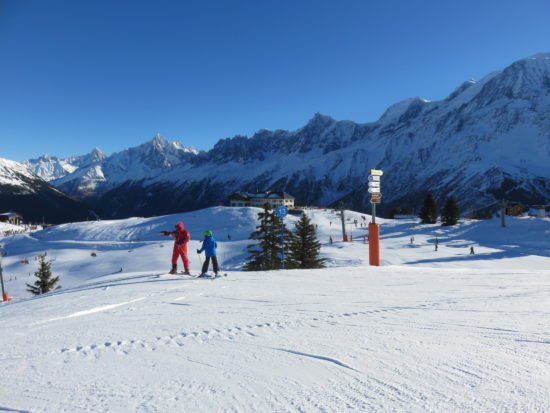
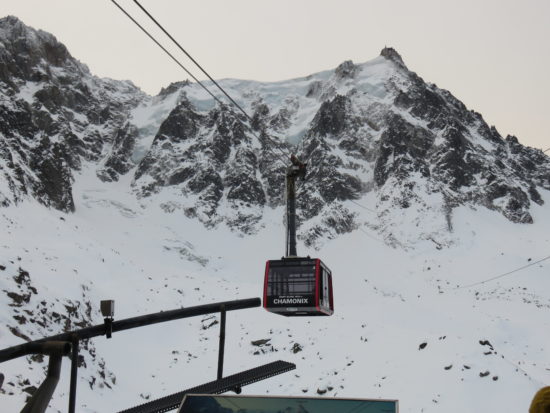
Domaine De Balme
De Balme consists of Le Tour on one side and Vallorcine on the other. It’s a great choice for beginners and intermediates. At the bottom of Le Tour is an excellent ski area for beginners called La Vormaine. So if you are new to skiing, this and Le Savoy are great places to start.
Aiguille Du Midi & Mont Blanc
The cable car from Chamonix takes you up to Aiguille Du Midi at 3842m. From there, you can take another cable car to Mont Blanc. These mountains are only for the experienced. We visited as sightseers, and it was great to see the brave skiers descending the 22km off-piste Vallée Blanche (White Valley). You need to go with an experienced high mountain guide.
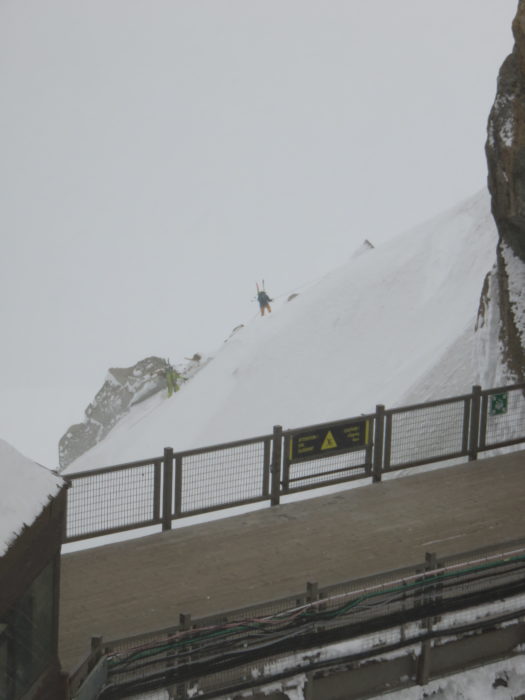
Chamonix Mont Blanc Resort Ski Passes
If you have never been skiing before, then you will likely baulk when you see how expensive a ski pass is. First up, you need to purchase a plastic ski pass card for €3. If you buy them online, then there are pick-up boxes/collection points at:
- Aguille Du Midi cable car departure point
- Grand Montets in front of the cash desks in Argentière
- Les Houches – Bellevue and Prarion
- Brevant at the Planpraz departure point
- Montenvers near the cash desks
You can also purchase ski passes from the ticket offices at the base of the ski fields, or from the Chamonix Tourist Centre. The Tourist Centre has both manned desks and a machine where you can purchase your ski card and ski passes. Once you have your ski pass card, you can sign up for an online account and just purchase your ski passes online, and it is instantly applied to your card.
When you go skiing, you will have to scan your card to get through the gates for the cable cars up the mountains and also the ski lifts. Don’t put your ski pass in your wallet. If your ski jacket has a secure pocket on the arm, then this is where you should store your ski pass. Place it in the pocket, and it should work through the material if you pass your arm by the scanner. If you don’t have a jacket with an arm pocket, you can simply place it in the normal hand pocket. However, you will need to position yourself/your coat so that the pocket is close enough to the scanner.
There are several types of ski passes you can purchase. Here is a detailed list of what each of them offers. You can purchase a four hour pass, a single day pass, or multi-day passes.

Mont Blanc Unlimited
This is the most expensive card, but as well as getting you access to all of the ski slopes, it also provides free entry to a number of sights and attractions. If you plan to see a number of sights in one day, then it is often cheaper to purchase this card rather than pay individual entry. For example, on our sightseeing day we visited Mont Blanc, then went on the tramway up to see the ice caves. All of this was covered in the ticket.
If you purchase this pass for 3 days or over, you will get access to additional sights and attractions.
Chamonix Le Pass
This pass will get you access to the ski fields of Brévent-Flégère, Great Montets (except the top), the Balme – The Tour – Vallorcine Area, and the beginner ski area of Vallée.
Les Houches Forfait
This is the cheapest pass and will get you access to Les Houches, which is the perfect place for beginners. This pass also gets you access to the tramway.
Tip
- When purchasing your card in a ticket office or online, they will attempt to sell you ski insurance. If you already have your own travel insurance that covers skiing, make sure you decline this.
Ski Lessons
If you are a beginner, then you will definitely need to book yourself in for lessons. Even if you are not a complete beginner, it is good to get some lessons to improve your technique. You can either get private lessons (the more expensive option) or you can join a group (the cheaper option). We didn’t get lessons whilst in Chamonix, so I’m not able to recommend anyone, but I will say, every instructor I saw seemed to be providing a great lesson. Here is a list of the Chamonix Ski Schools.
Here is also a great YouTube series on how to ski.
Chamonix Non-Skiing Activities
Skiing and snowboarding aren’t for everyone. If you still want to get out on the snow to enjoy yourself, then think about trying ski sledging/tobogganing. Or try your hand at cross country skiing, or hire some ski shoes and head out to explore the mountains.
If the slopes aren’t for you, then there is still plenty of fun to be had off the ski field – ‘après ski’ – French for ‘after ski’. There are lots of amazing non-skiing activities to enjoy in Chamonix – read my post What to See and Do in and Around Chamonix – Other Than Skiing.
Food and Drink
The ski fields generally have food and drink facilities. At the top of the main lift, you will generally find a restaurant and bar serving very expensive (€5 for a small hot chocolate!) food and drinks, including both alcoholic and non-alcoholic. There are free toilets and indoor and outdoor seating areas where you can enjoy your picnic lunch. The larger ski fields have other restaurants that you can literally ski to on your way down the slopes.
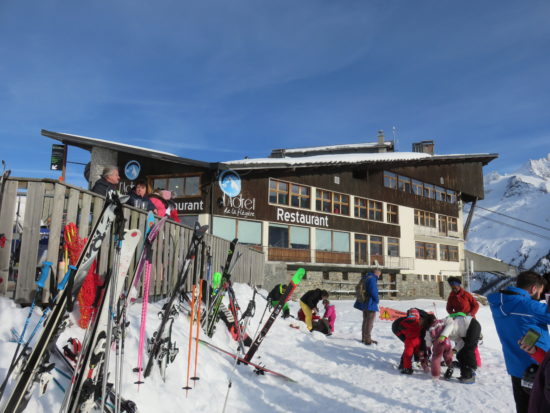
Practical Tips for Visiting Chamonix
- What to Pack: Planning your ski holiday to Chamonix? Then follow my guide What to Pack for a Beginner’s Ski Holiday. If you have never experienced winter in a cold climate before, then use my guide on How to Stay Warm on a Winter Vacation.
- Tourist Office: For up-to-date information on skiing in Chamonix, visit the Chamonix Tourist Office (85 Place du Triangle de l’Amitié, 74400 Chamonix-Mont-Blanc, France).
- Packed lunch: These bakeries open early in the morning for skiers to grab a packed lunch. Check the storefront or Google for their opening days and times.
- Bighorn Bistro & Bakery – 77 Place Edmond Desailloud, 74400 Chamonix-Mont-Blanc, France
- Le Fournil Chamoniard – 204 Avenue de l’Aiguille du Midi, 74400 Chamonix-Mont-Blanc, France
- “Pie” Patisserie&café – 73 Avenue Ravanel le Rouge, 74400 Chamonix-Mont-Blanc, France
- La Paniere – 31 Place de l’Église, 74400 Chamonix-Mont-Blanc, France
- Pastry House Richard – 10 Rue du Dr Paccard, 74400 Chamonix-Mont-Blanc, France
- Language: French, however, as Chamonix is a tourist city most people speak English. Even so, do try your hand at a few French words:
- Yes = oui (wee)
- No = non (no)
- Please = sil vous plait (seal voo play)
- Thank you = merci (mare-see)
- Hello = bonjour (boh(n)-zhoor)
- Good evening = bonsoir (boh(n) swarh)
- Currency: Euro
- Tipping: The service charge is included in the bill, so there is no need to tip.
- Electricity: The electrical current is 220-240 volts, 50-60 Hz. Wall outlets take the European two round prong plugs. However, you are better off purchasing a worldwide adaptor that can be used in France as well other countries. At least then you can potentially get some further use out of it on future vacations. If you’re taking several electronics with you, then I would recommend purchasing a couple of these adaptors.
- Navigating: We used Google’s free Offline Maps. Google Offline Maps allows you to access free maps for navigating that can be used offline i.e. you don’t need WIFI, data, or roaming to be able to use them. Follow this detailed guide on how to use Google’s Offline Maps. Using your phone as a GPS will drain your battery quickly, so use a portable battery charger which you can use to charge your phone and any other USB chargeable devices. If you prefer a paper map, then pick one up for free at the Chamonix Tourist Office (85 Place du Triangle de l’Amitié, 74400 Chamonix-Mont-Blanc, France). Your accommodation should also provide one.
- Ski trail maps: You can pick up a paper map of the ski trails for each of the ski resorts from the tourist office. Here is an online map of the winter ski areas and summer hiking areas.

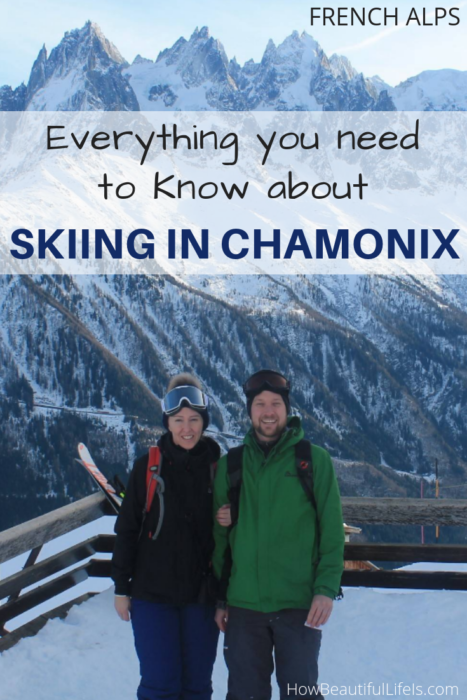
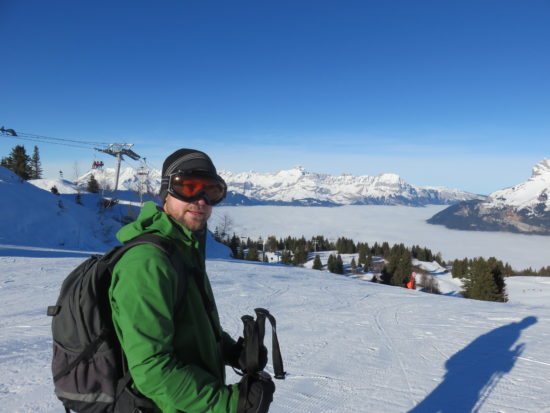
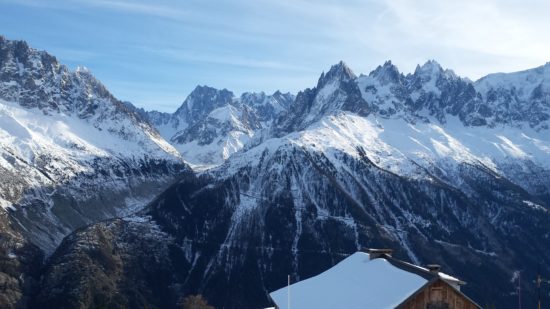
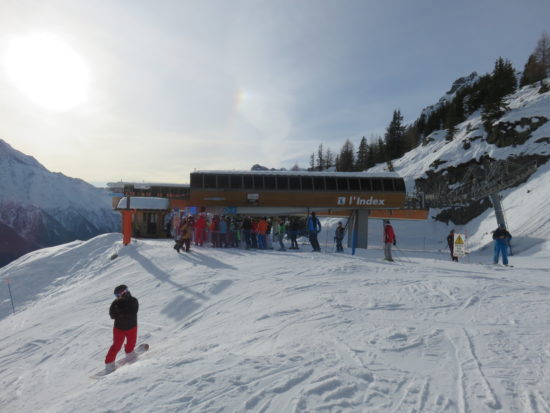
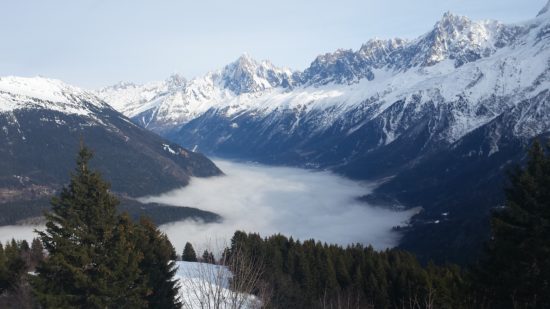
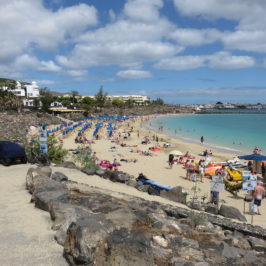

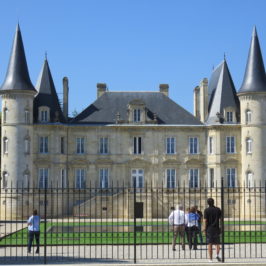



Leave a Reply